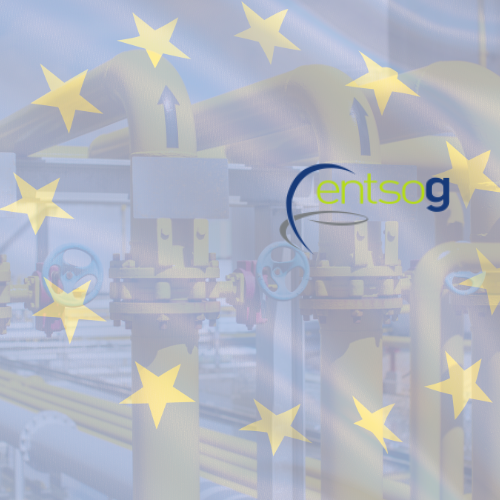This week ENTSOG, the European Network for Transmission System Operators for Gas, published (click here) its report on the EU’s gas situation ahead of the 2025/26 winter season.
ENTSOG’s annual report is scenario-based and aims to identify potential gas resource adequacy risks before the forthcoming winter season. Strictly speaking, its focus is on the readiness of the EU’s gas infrastructure to cope with the upcoming winter and adjacent summer season rather than a forecast of the actual availability of gas. Nonetheless, it provides a reasonable proxy for the current security of supply outlook. The report comes in light of the final year of the original EU gas storage rules put in place post the Russian invasion of Ukraine in 2022. From next year, a more flexible set of rules will apply (see here). ENTSOG’s analysis also included an assessment of LNG supply into Europe given its increased role and importance to the bloc, including both low and high availability scenarios;
According to the report, as of 1 October 2025 the EU’s underground gas storage levels had reached 83% on average, compared to 94% in 2024 (approximately a 12bcm differential). Since this is an average number, some countries are above 90% and some are as low as 50%. The report also shows that 31% of supply in the 2024/25 season was delivered from storage. The current in-force EU Gas Storage Regulation requires member states to achieve a 90% filling level by 1 December, with flexibility permitted under certain market conditions. The report recommends the further monitoring of the situation in North-Western Europe, which has relatively low levels of storage for this time of year, Germany in particular. The report also notes that the development of new infrastructure since ENTSOG’s last report has had a positive impact although there are still circumstances under which supply limitations and bottlenecks may occur – particularly scenarios involving a cold winter, low initial storage levels combined with supply disruptions;
The report notes that the “LNG Low supply” scenario would drive some sort of demand response requirement, either by policy or through price, to ensure that storage is not fully emptied by the end of winter season. This scenario would worsen were a cold winter to occur. Other major supply risks mentioned in the report include the disruption to large offshore infrastructure supplying the continental EU and constraints on gas imports from Algeria. The report suggests that a complete disruption of Russian gas could be absorbed but additional supplies from other sources would be needed, particularly LNG imports, which are supported by increased infrastructure capacity, and/or demand response to ensure that storage is not fully depleted.
ENTSOG’s 58-page report is available here. While the subject matter may not appear directly relevant to compliance managers at face value, the broader context of EU gas markets is highly pertinent insofar as market conduct is concerned. The political sensitivity surrounding EU gas prices remains significant, and the Gas Market Task Force established under the Action Plan for Affordable Energy (click here) continues its work (albeit somewhat elusively) to curb market manipulation and improve transparency in EU natural gas markets. The Task Force is expected to launch a consultation before the end of 2025, which, the EU Commission has suggested, could prompt further amendments to the existing REMIT and MiFID regulatory frameworks.
.png)

